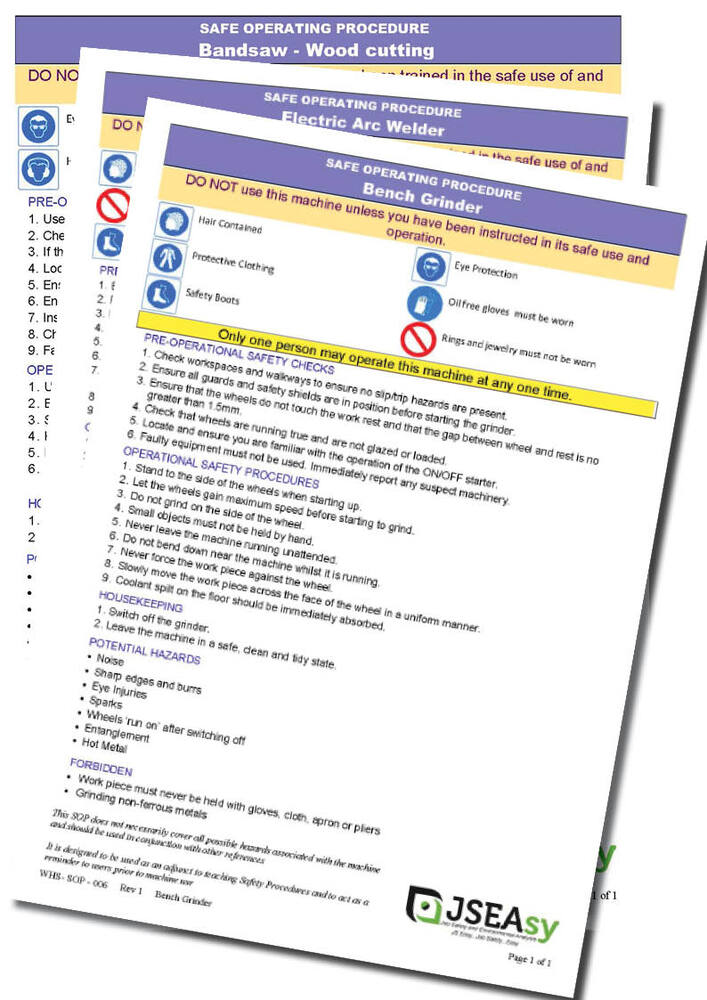SOP 060 Bandsaw – Wood cutting
Acquiring a Safe Operating Procedure Document for a Bandsaw used in wood cutting is crucial for several reasons:
- Safety Assurance: The document outlines essential safety protocols to mitigate the risks associated with operating a Bandsaw. It provides guidelines to prevent accidents, injuries, and potential hazards, ensuring the well-being of individuals using the equipment.
- Regulatory Compliance: Adhering to safety standards and regulations is imperative when working with machinery. A Safe Operating Document helps ensure that your use of the Bandsaw aligns with industry and regulatory safety requirements, preventing legal issues and ensuring a compliant workplace.
- Equipment Efficiency: The document includes instructions on the proper operation and maintenance of the Bandsaw, optimizing its performance and extending its lifespan. This can lead to cost savings by reducing the likelihood of breakdowns and the need for frequent repairs.
- Quality of Work: Following safe operating procedures contributes to the production of high-quality woodwork. It helps prevent mistakes, material waste, and damage to the equipment, ultimately enhancing the precision and quality of the finished products.
- Employee Training: The document serves as a valuable resource for training individuals who operate the Bandsaw. Proper training ensures that users are well-informed about safety measures and best practices, fostering a culture of responsibility and skill development.
- Risk Mitigation: By adhering to the guidelines outlined in the Safe Operating Document, you proactively address potential risks associated with Bandsaw operation. This not only protects individuals using the equipment but also safeguards your business from potential liabilities and disruptions.
In summary, investing in a Safe Operating Procedure Document for a Bandsaw used in wood cutting is a proactive measure that prioritizes safety, ensures regulatory compliance, optimizes equipment efficiency, enhances the quality of work, facilitates employee training, and minimizes overall risks associated with woodworking activities.


